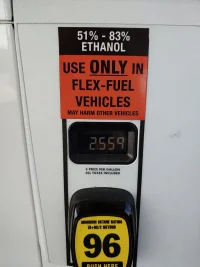But if you have a jb4, for example, that can react to the instantaneous mix and "do the right thing", then it doesn't really matter that for the first mile, it's E15, then E20, then E32, etc... As long as you don't exceed E40/E50, you should be fine.
I do not believe this to be totally accurate. We have to stop conflating CPI with other setups.
It is true that the JB4 samples more often than the vehicle’s sensors and can make adjustments on the fly, to keep things within the bounds of the vehicle’s sensors.
However, it is also true that the HPFP will max out much quicker than the LPFP. It is also true that ethanol flows at a much higher rate than gasoline, which exacerbates the aforementioned issue.
The JB4 when paired with CPI, which feeds off the LPFP, can handle ethanol mixtures up to E60, to bypass the HPFP falling flat on its face. Terry found the sweet spot for CPI to be around E50. This is only true when paired with CPI.
If you do not have CPI then the target ethanol mixture is E30. This is not to say that E33 or E35 will cause issues, but then we are creeping into an area where the HPFP will become strained. Worst case scenario, the JB4 will keep things tidy, and you’ll notice fuel pressure drops in the logs and/or timing being pulled.
Also, the JB4, as of now, does not alter the mapping based on ethanol content.
I am a believer that we need to do our own due diligence and stop depending on a product, in this case the JB4, to protect us from our own ignorance/arrogance.
If we know that the HPFP can max out, and we know we don’t have CPI — and even if we do, there’s no reason to run a mixture that our current setup cannot handle with the fallback of well the JB4 will save us.





